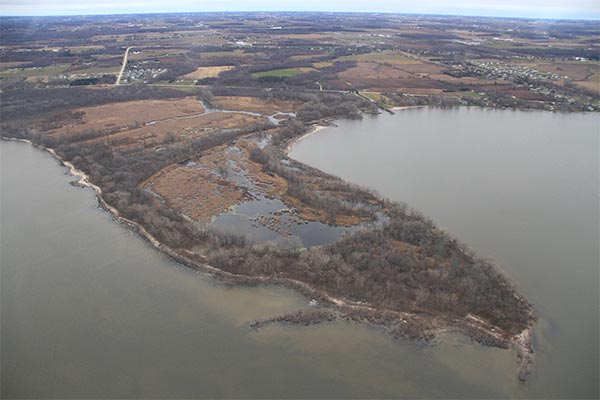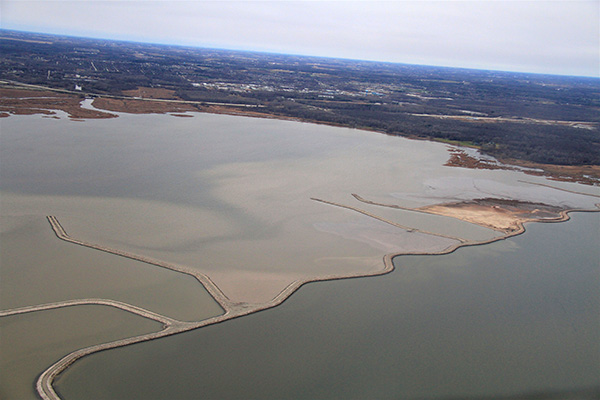Active Projects
Rooted in Research
Connecting students, the community and the environment.
From analyzing ecosystems in the field to developing real-world conservation strategies, student researchers gain practical experience that prepares them for careers or graduate study. These hands-on projects build critical skills in data collection, ecological monitoring and scientific communication—skills highly valued in today’s environmental job market. Beyond our campus, this research directly benefits the Green Bay community by providing valuable insights and tools for professionals working to protect and manage natural resources, from wetlands and forests to coastal habitats.
Participate in Our Research
If you're a student at UW-Green Bay and would like to participate in any of this research, get in touch with us.
Coastal Wetland Monitoring
To help better understand coastal wetlands across the Great Lakes, we collect data from plants and animals. Over 45 UW-Green Bay students have participated, and 20 principal investigators are collaborating on the project.

UWGB Complex Project
The UWGB Complex Project is one of 12 habitat restoration projects included in the Lower Green Bay and Fox River Area of Concern (LGBFR AOC). The project is to improve fish and wildlife habitat and resiliency at Point au Sable and the Cofrin Memorial Arboretum.

Cat Island Restoration
Though UW-Green Bay now only plays a minor role in this project, Cat Island Restoration is incredibly important for our region. An array of partners is working to help reconstruct these three barrier islands.
Oneida Bird Monitoring
Collaborations with the Oneida Nation, NEW Bird Alliance and Audubon Great Lakes have led to an extensive bird monitoring program, engaging over 100 volunteers and documenting nearly 200 bird species across multiple restoration sites.
Ask an Expert
As Director of the Cofrin Center for Biodiversity, Mandy Banet is passionate about protecting Northeast Wisconsin’s natural heritage—and always happy to connect with those who share that passion.